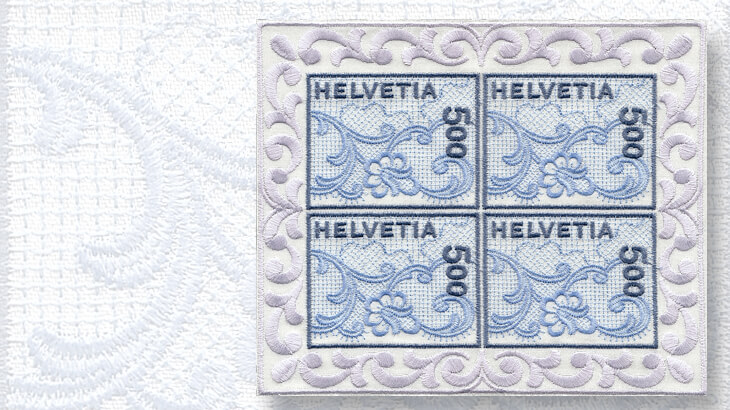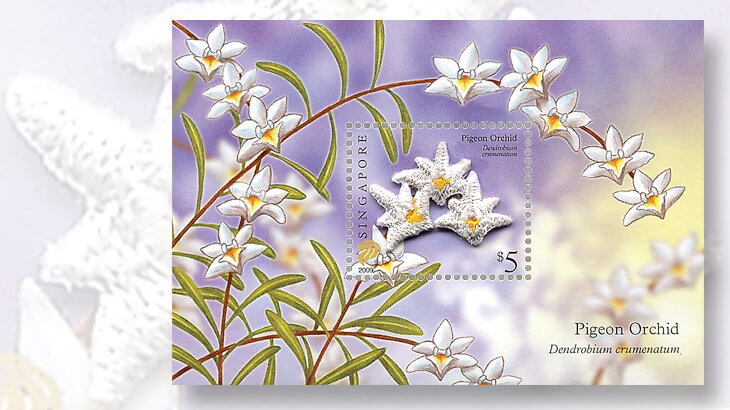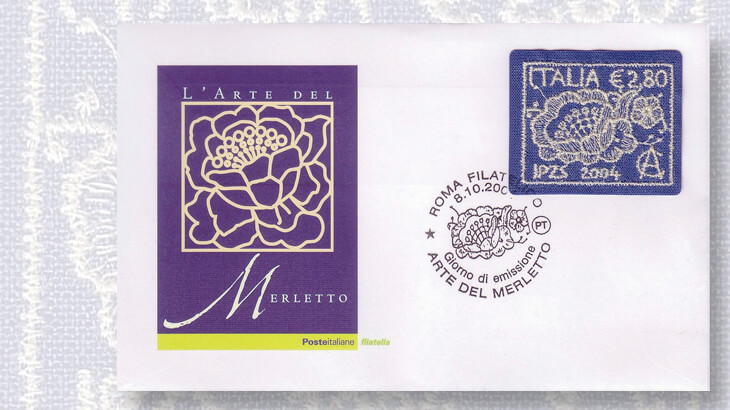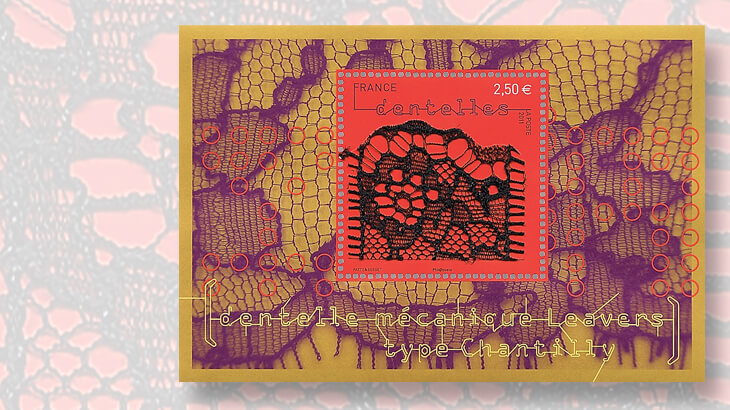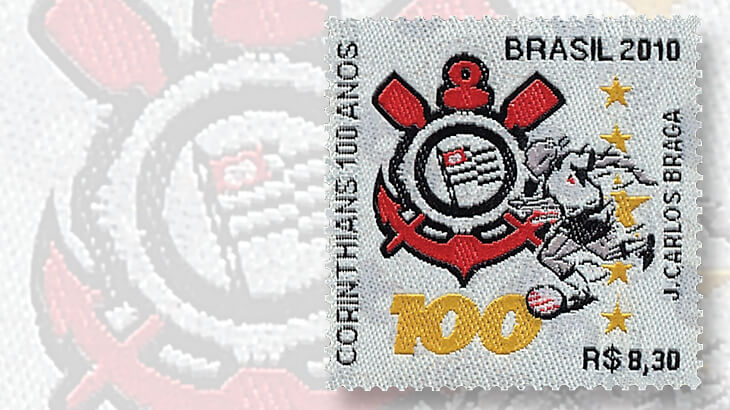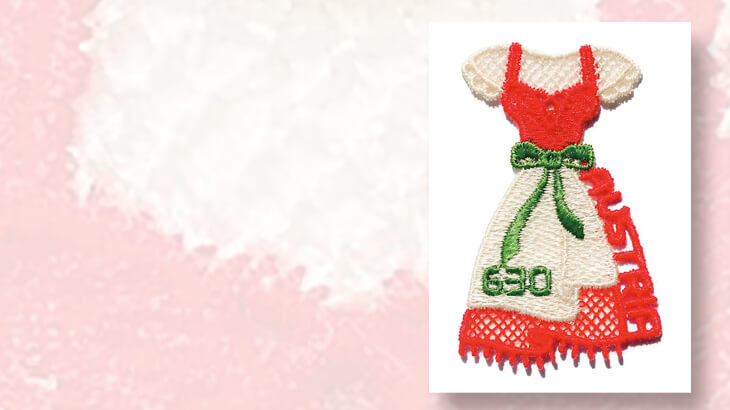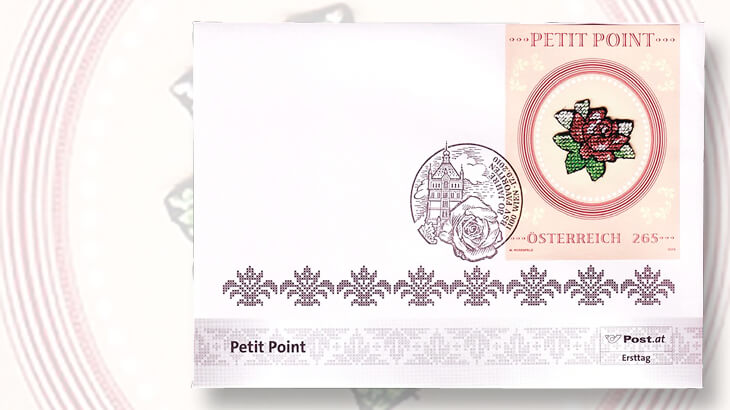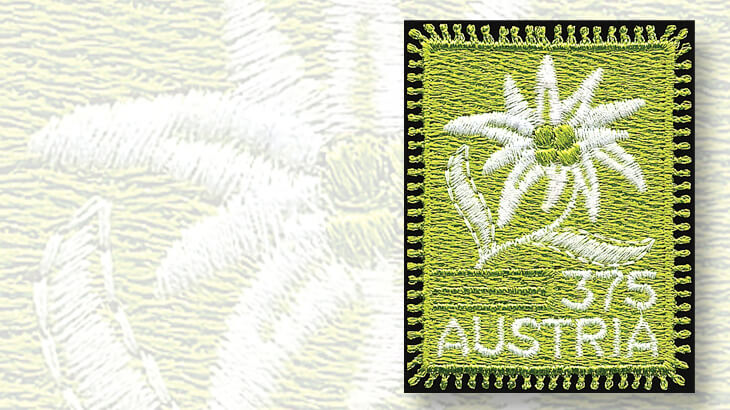World Stamps
Austria’s dirndl silhouette dress and the world of embroidered stamps
By Wayne Chen
Austria Post is continuing its string of firsts when it comes to innovative stamps.
It issued the first glass stamp in June, and the first leather stamp (cut in the shape of lederhosen, Scott 2580) in 2015.
Yet another innovative stamp will be issued Sept. 22: an embroidered stamp in the shape of the traditional dirndl dress. It will be the world’s first embroidered silhouette stamp.
Connect with Linn’s Stamp News:
Sign up for our newsletter
Like us on Facebook
Follow us on Twitter
The dirndl is a traditional outfit of women and girls in some areas of Austria and southern Germany.
The dirndl depicted on the Austria stamp features traditional colors and patterns specific to the region. In my opinion, no material would be more suitable than using fabric textile and embroidering technology to represent the dirndl on a stamp.
While there have been several embroidered stamps issued by Austria, Switzerland and other countries, this stamp is unique because it captures the shape of the dress itself.
Hammerle & Vogel, a family-run company that specializes in high-quality embroidery, is responsible for both the design and manufacturing of the Dirndl stamp.
Each stamp is made from approximately 130 feet of thread in three colors: red, green and white, forming the embroidered silhouette.
The different colors and the stitches make the dirndl appear three-dimensional, and, at the same time, create a light and airy effect for the dress.
The way fabric drapes and folds is especially evident on this stamp.
The delicate blouse is made in off-white. The apron was done in the same color but using a different stitch.
The country name “Austria” is stitched in red down the right side of the stamp, starting at the bottom of the green bow.
Like the bow on the apron, the 6.30 denomination (about U.S. $7) was stitched with eye-catching green threads.
Such special innovative material stamps issued by Austria Post usually bear a high denomination, probably as a means to recover the printing cost, but also as a target toward collectors.
The total print run was 140,000 Dirndl stamps, according to Austria Post.
Austria Post also is offering an official first-day cover with a special cancellation and a generic cachet for this stamp on its website.
Austria Post previously has issued three other embroidered stamps; all were produced by Hammerle & Vogel.
In 2005, Austria issued an embroidered Edelweiss stamp with a textile edge mimicking stamp perforations (Scott 2019); this was followed by a similar Gentiana stamp in 2008 (2175). A petit point embroidered vignette of a rose is affixed on a souvenir sheet issued in 2010 (2278).
Switzerland issued the world’s first truly embroidered textile stamp in 2000, featuring laces in two color threads (Scott 1075). In contrast to stamps printed on paper, the design of this Swiss stamp is embroidered using a polyester thread on a high-quality, satin-weave polyester base.
In addition to the single stamp, a special pane of four stamps with an embroidered decorative border was issued at the same time. This Swiss pane is highly sought after in the secondary market.
Other recent examples of embroidered stamps include: Italy’s Lace Making stamp issued in 2004 (Scott 2624), Singapore’s Pigeon Orchid souvenir sheet (1372), and Brazil’s commemorative issued in 2010 for the 100th anniversary of the Corinthians Paulista Sports Club (3146). Each of these issues are different in terms of relief depth and craftsmanship or printing technique.
The four souvenir sheets issued by France’s La Poste in 2011 featuring traditional laces from Chantilly, Le Puy-en-Velay, Alencon and Calais (Scott 4092-4095) are technically not embroidered. Instead, each lace is a single piece of textile mounted on a traditional paper-printed souvenir sheet.
As in the case of any work of embroidery, minimal differences can be expected due to the number of different manufacturing processes involved. Such small differences in appearance among the embroidered stamps cannot be termed faults or be assigned catalog numbers as varieties.
I have enjoyed forming a mini topical collection of stamps printed by embroidery. These stamps are fun to look at.
The embroidery process produces a true three-dimensional stamp. As a result of their high relief, these stamps are especially tangible.
Embroidered stamps are becoming more popular among collectors. Many of the stamps were issued in small quantities and are getting harder to find.
MORE RELATED ARTICLES
Headlines
-
US Stamps
Oct 7, 2024, 3 PMMcMurtrie dismissed as APS education director following Sept. 21 arrest
-
US Stamps
Oct 7, 2024, 12 PMVasiliauskas named president of Mystic Stamp Co.
-
US Stamps
Oct 6, 2024, 5 PMApgar souvenir card available
-
US Stamps
Oct 6, 2024, 4 PMFirst Continental Congress and U.N. stamps receive Scott catalog numbers
